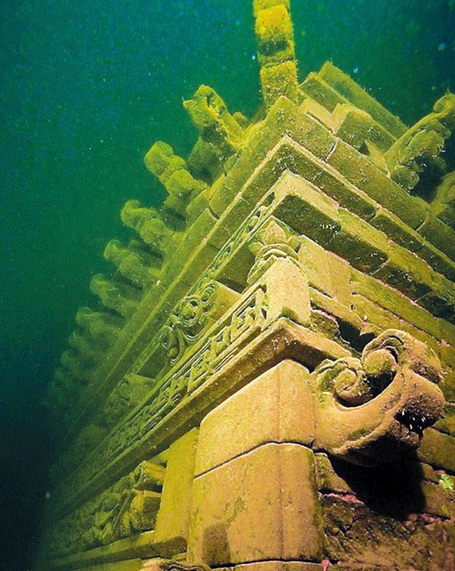- 中文
- EN
- Français
- 日本語
- 한국어
- 繁體中文
Reconstruction of Ancient Shicheng County Becomes An Open-air Museum

Ancient Shicheng County under the bottom of Thousand Islands Lake
AFTER the Xin’anjiang Dam was put into operation in 1959, much of ancient Shicheng County found itself at the bottom of Thousand Islands Lake.
Natives of Shicheng, which dates back to the Eastern Han Dynasty (AD 25-220), may have relocated decades ago, but nostalgia for this sunken area has never completely washed away.
Over recent years, local authorities have spent billions of yuan reproducing parts of Shicheng on dry land. Over last week’s Dragon Boat Festival, a reconstructed section of the county covering 80,000 square meters was opened as an open-air museum. For many who remember the county before its flooding, stepping into this museum is probably as close as they’ll ever get to going home.
In the past, locals envisioned plans to lower the waterline and bring the village back to light. This scheme was eventual nixed due to concerns that decades of submersion would destroy the county’s remaining structures if they were exposed to air again.
In 2009, Chinese National Geography magazine dispatched divers to explore and photograph this mysterious submerged county. The underwater images taken by divers sparked a resurgence of interest in the county, and were believed to have inspired plans to reconstruct it.
In actuality, preparations for such a project began as early as 10 years ago. Archeologists went to Anhui and Jiangxi provinces to look for former residents and collect historical materials from them. Old photos and hand-drawn maps provided archeologists with a blueprint for reconstruction.
To stay as faithful as possible to the county’s original layout, organizers visited more than 600 residents. Using underwater studies, Shicheng’s city wall, streets, residential buildings, ancestral temples, memorial archways, pagodas and even wells were reproduced.
According to the collected documents, Shicheng had more than 30 memorial archways, a common element of Hui-style architecture in olden times. In order to cut expenses, officials only duplicated seven arches.
Every reproduced folk houses are marked with the former residents and their descendants’ names, and the interior decor is ornamented according to the original appearance. Stores are marked with tablets and carved with time-honored brands. All of the traditional black-roofed and white-walled buildings reappear the once-glorious county.
In addition, hotels and restaurants have already opened there. Visitors could savor authentic Chun’an cuisine and sleep over in the new Shicheng. Meanwhile, they can explore the underwater city using virtual-reality technology.



